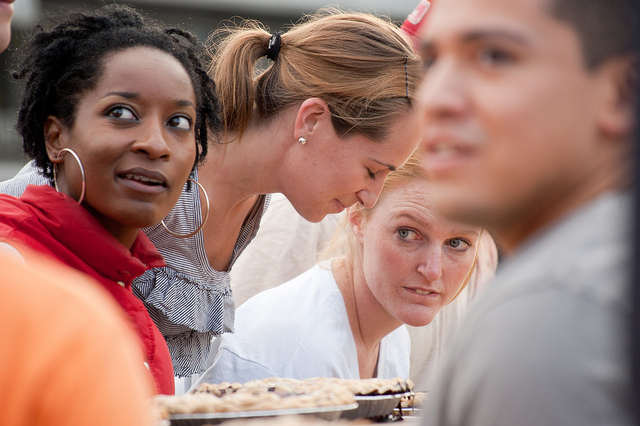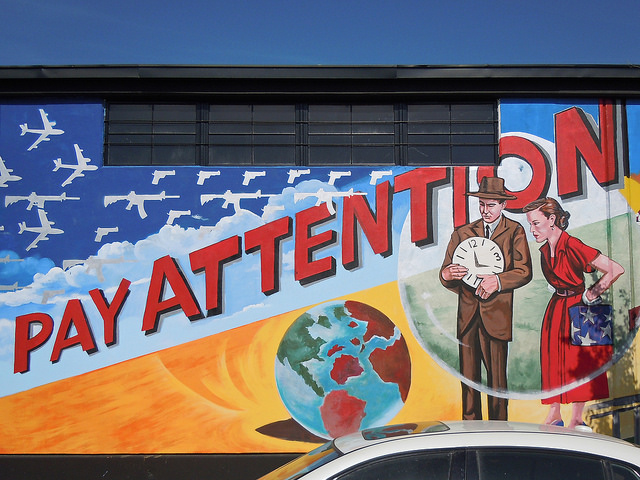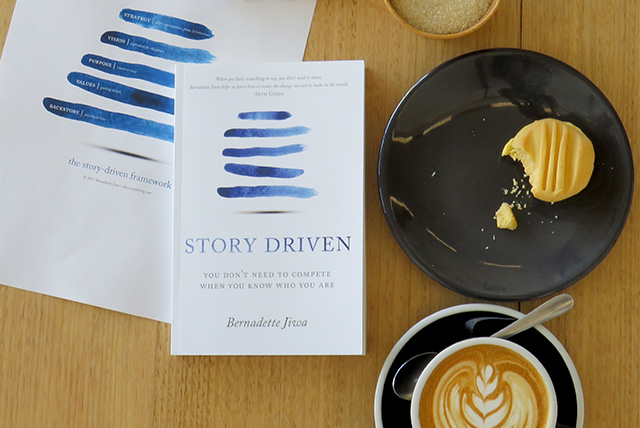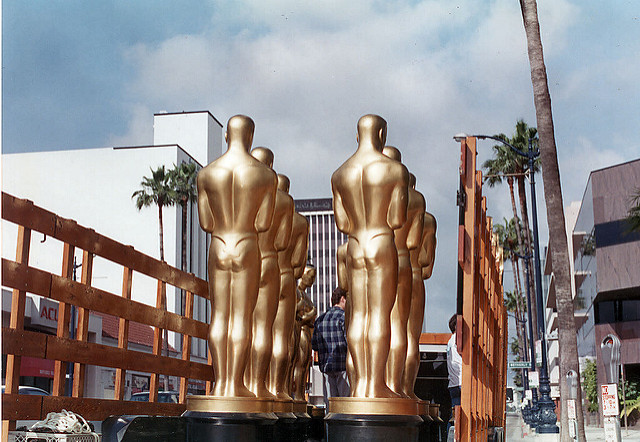Unlock the Magic in Your Story Now
Get the Free 20 questions to Ask Before Launching Your Idea workbook when you sign up for occasional updates.
Get the Free 20 questions to Ask Before Launching Your Idea workbook when you sign up for occasional updates.
The Measure Of Greatness
filed in Success
 I will never forget the first assembly at my children’s school in Australia. Our family had newly migrated to Perth, Western Australia. We wanted to settle our boys as quickly as possible into their new life. So, much to our ten-year-old’s disgust, they were in new schools within two weeks of our arrival. There we were on a sunny, but brisk August morning (still trying to get our heads around that fact that it was not summer, but winter in Australia), at our local primary school. We were invited to stand and sing the national anthem by the year six student hosting the assembly. This was new to us. In the countries where we were born and raised we sang the national anthem at big public events or on more officious occasions.
I will never forget the first assembly at my children’s school in Australia. Our family had newly migrated to Perth, Western Australia. We wanted to settle our boys as quickly as possible into their new life. So, much to our ten-year-old’s disgust, they were in new schools within two weeks of our arrival. There we were on a sunny, but brisk August morning (still trying to get our heads around that fact that it was not summer, but winter in Australia), at our local primary school. We were invited to stand and sing the national anthem by the year six student hosting the assembly. This was new to us. In the countries where we were born and raised we sang the national anthem at big public events or on more officious occasions.
When I was growing up in Ireland we learned the national anthem is Irish and to my shame, I still struggle to recall what all the words mean today. In the UK where our sons were born, we had to sing ‘God Save the Queen’ once or twice in fifteen years. And yet here we were, two weeks into our new life learning what it meant to be Australian. Every child from the age five up knew the words to the national anthem. They were not just mouthing those words. They were singing them with gusto—like they meant them. It brought tears to my eyes. Hearing it still does to this day. Our family never takes the sense of belonging to a country that welcomes people and to a culture that values generosity and fairness for granted.
In the scheme of things going on the world today, sportsmen attempting to cheat in a cricket match seems trivial. But the incident involving Australian cricketers playing in South Africa at the weekend has caused more than a stir back home. It has gotten under our skin and into our hearts—challenging our sense of who we think we are.
The way the most respected members of our sporting community have represented us on the world stage is not how we as a nation see ourselves. We pride ourselves on being fair and playing fair, on doing the right thing for the collective good over gaining a short-term advantage. Our sportspeople are admired and acknowledged for what it takes, not just to get to the top of their game, but to stay there. We are proud when we win, but we are prouder of the way we win. We understand that above all it’s a privilege to have a place on the field. The backlash is a sign of our strong culture and beliefs about what’s fair and right.
A culture with a strong set of values is the backbone of every country, community and company. The shared identity and common goals of any group are what enables it to thrive when we identify more with being winners than contributors our focus shifts. We are driven by short-term goals to create a near-term advantage. We lose sight of what’s important for the prosperity of the group in the long run. We forget that ‘greatness’ is three dimensional and throw our legacy under the bus.
We’ve all seen how a legacy can be damaged or destroyed in the business arena too. Great leaders in any arena are great not just because they hit more runs out of the park, but because they give us something to believe in and belong to. They show us the best of us, reflecting that what we do when no one is watching is who we are.
As James Carse alludes to in his brilliant book, Finite and Infinite Games. The match might be finite, but the game is infinite. It’s our job to do everything in our power to earn the privilege to play again tomorrow.
Image by cmrlee
Share this article
The Difference Between A Weak Brand And A Strong Brand
filed in Marketing, Storytelling, Strategy
 The biggest mistake a brand can make is to try being all things to everyone. Weak brands settle for doing what’s easy or obvious. They appeal to the market of everyone, avoid the edges and thus become interchangeable with their competitors.
The biggest mistake a brand can make is to try being all things to everyone. Weak brands settle for doing what’s easy or obvious. They appeal to the market of everyone, avoid the edges and thus become interchangeable with their competitors.
Strong brands know they are this and not that. They intentionally aspire to be something to someone and so become irreplaceable to their customers.
Who’s your someone? What do you want to be to them?
Image by Nathan Makan
Share this article
The Choice
filed in Storytelling, Strategy
 We know how the trip will pan out even before we get on the tram. The driver is agitated. He uses his bell accordingly. He repeatedly ‘dings’ three times, announcing his tram’s presence on the road. His bell is warning system—reflecting his mood. Everything becomes an emergency. How the driver operates the bell changes his attitude and the way he drives the tram. It also changes the posture of the passengers on board. We collectively become jumpier.
We know how the trip will pan out even before we get on the tram. The driver is agitated. He uses his bell accordingly. He repeatedly ‘dings’ three times, announcing his tram’s presence on the road. His bell is warning system—reflecting his mood. Everything becomes an emergency. How the driver operates the bell changes his attitude and the way he drives the tram. It also changes the posture of the passengers on board. We collectively become jumpier.
Contrast the ‘treble ring’ warning system with the way most Melbourne tram drivers use the bell. They ‘ding’ in a potentially dangerous situation—to alert a cyclist and distracted pedestrians or to let passengers know the tram is about to start moving. Often their bell signals a friendly greeting to other tram drivers as they pass each other on the road. I can empathise with the ‘treble ring’ tram driver. Perhaps he’d just had one of those days? But he has more power than he realises.
We each get the chance to, as author Neil Gaiman says, ‘make the world better for our having been here.’ How we show up to do that is a choice.
Image by Edward Blake
Share this article
How To Fill The Gap That’s Yours To Fill
 No bookstore can stock more books than Amazon. No local clothing designer can launch a new range faster than Zara. No artisan chocolatier can sell chocolate cheaper than Cadbury.
No bookstore can stock more books than Amazon. No local clothing designer can launch a new range faster than Zara. No artisan chocolatier can sell chocolate cheaper than Cadbury.
If there’s nothing your bigger, faster, cheaper competitors can’t do, how will your business keep up? How will you survive, let alone thrive?
Your sustainable advantage comes, not by obsessing over what your competitors can’t do, but by doing what they won’t do to delight customers. That gap is yours to fill.
That’s how Amazon became Amazon—by investing in and doing the things other retailers didn’t do. And it’s how you will build a business you’re proud of as you create the future you want to see.
Image by Shinya Suzuki
Share this article
Squaring The Marketing Circle
 The ‘60% OFF’ signs had attracted shoppers to the empty stall. Sales assistants tried to turn browsers into buyers by offering to help. One prospective customer asked if they had any circular rugs in the sale. The assistant showed her a square rug instead. “These are only $100,” she said.
The ‘60% OFF’ signs had attracted shoppers to the empty stall. Sales assistants tried to turn browsers into buyers by offering to help. One prospective customer asked if they had any circular rugs in the sale. The assistant showed her a square rug instead. “These are only $100,” she said.
In the past, we’ve relied on the notion that marketing and sales are about making people want something. In a digital world of infinite choices, we’re coming to realise that it’s easier to make something people want.
A sale happens in two stages. Stage one is a deep understanding of the customer we want to serve. Stage two is the act of engaging with that customer.
Successful marketers do both.
Image by eatswords
Share this article
Big Enough
 Conventional business wisdom suggests that success is dependent on achieving scale. We’ve come to equate fulfilling our potential with being number one—having the biggest piece of the pie. In our quest for success, we sometimes forget to question how much pie is enough.
Conventional business wisdom suggests that success is dependent on achieving scale. We’ve come to equate fulfilling our potential with being number one—having the biggest piece of the pie. In our quest for success, we sometimes forget to question how much pie is enough.
Exceeding the optimal amount of pie has consequences. We fail to deliver on expectations when we bite off more than we can chew. We become preoccupied with the acquisition of customers instead of working to keep the customers we have. We obsess about sustaining an advantage and forget to celebrate what we’ve accomplished. We move too fast or too soon. We don’t reflect on the difference we’re making. And we stop enjoying the journey because we’re always chasing a bigger piece of the pie.
You don’t need every customer. You don’t have to go after every single opportunity. You don’t need to be bound by traditional metrics of success. You can choose to be big enough.
Image by srietzke
Share this article
What The Best Marketers Do
 I’m not sure when our attitude to marketing shifted. But it’s likely that it coincided with our ability to buy attention. The price of reaching more eyes and ears on flyers and billboards, radio and TV, seemed cheap compared to the effort of earning customer loyalty day after day.
I’m not sure when our attitude to marketing shifted. But it’s likely that it coincided with our ability to buy attention. The price of reaching more eyes and ears on flyers and billboards, radio and TV, seemed cheap compared to the effort of earning customer loyalty day after day.
The great marketers of two generations ago knew a reputation could not be easily bought—but it could be quickly destroyed. They didn’t try to be seen. They devoted the majority of their time helping their customers to feel seen.
That’s what the best marketers still do. They don’t shout, ‘look at me’. They whisper, ‘I see you’.
Image by Jeff Stvan
Share this article
Create The Future You Want To See

The best investment I ever made in myself and my business was buying a copy of Seth Godin’s book, Purple Cow. Seth taught me that remarkability was a choice. Just as business owners don’t work just to pay the bills, writers don’t write just so they can eat. They write to create the change they want to see in the world. That’s what we’re all here to do.
My new book, Story Driven: You don’t need to compete when you know who you are, published a few days ago. It’s my most important work. That’s why I’m launching the Kindle eBook edition at the special price of 99 cents this week. I’m not only inviting you to invest in yourself by buying a copy. I’m encouraging you to invest in your friends and colleagues by gifting the book to them.
You can buy and gift Story Driven today on Amazon.com, or if you’re in Australia, Amazon.com.au and the UK, Amazon.co.uk
(It’s available in all international Amazon stores. Search your local Amazon store by title and author).
We get to choose the future we want to see and the chance to create it together.
Thanks for giving me a reason to write.
Image by Kieran Jiwa
Share this article
The Best Of Us
filed in Storytelling, Success
 Our youngest son got his first paying job at a fast food restaurant this summer. He’d walked up and down the street handing out resumes for days and got a single call back. He was interviewed over the phone and invited in for trial one evening. He got the gig. Twenty dollars an hour and as many shifts as he could handle taking orders and wiping tables late into the night. The shifts ran from the evening until the early hours of the morning. Sometimes he was barely in bed before dawn. But he stuck with it for the entire summer without complaining. Then one day he mentioned he hadn’t been paid for a couple of weeks. His boss owed him over a thousand dollars in back pay.
Our youngest son got his first paying job at a fast food restaurant this summer. He’d walked up and down the street handing out resumes for days and got a single call back. He was interviewed over the phone and invited in for trial one evening. He got the gig. Twenty dollars an hour and as many shifts as he could handle taking orders and wiping tables late into the night. The shifts ran from the evening until the early hours of the morning. Sometimes he was barely in bed before dawn. But he stuck with it for the entire summer without complaining. Then one day he mentioned he hadn’t been paid for a couple of weeks. His boss owed him over a thousand dollars in back pay.
My husband and I reacted as many parents would. We were suddenly on guard, wary that our child (who is his own man now) wasn’t exploited. We offered unhelpful suggestions about what he should do next, telling him he probably shouldn’t work more shifts until he was paid. Our boy didn’t blink. Not showing up wasn’t an option. He’d committed, they were short staffed. He wouldn’t let his other team members down.
I remember when he was seven years old and winning prizes for being top in everything at school. The quiet, watchful blonde kid with deep brown eyes, who seemed to make no effort and yet always come out on top. After an assembly where he was awarded a medal for the best piece of creative writing in the state, one of the class Mums approached me. She had two questions. ‘What does he read? What do you feed him?’ I laughed until I realised she wasn’t joking.
People who don’t know our son judge him by his academic performance. He’s evaluated by his grades and ability to ‘achieve’ in the conventional sense of the word. What they don’t often see is the real measure of him. His kindness. His sense of fairness. His tenacity. His wicked sense of humour. His character. The things that can’t be measured. The things that make him, him.
He will probably be picked one day because of how he looks on paper—for his scores or the number of research papers he’s published. Whoever works with him won’t know until later why they are lucky to have him on their team.
Our stories are not defined only by what is seen and known. The imagination can’t always capture the best and the beauty of us.
Image by Robin Jaffray
Share this article
How To Craft A Powerful Message
filed in Storytelling, Strategy
 The acceptance speeches are the highlight of every Oscars ceremony. I’m a sucker for them. It’s fascinating to see how the best communicators in the world share their personal message in a just minute or two. This year, actress Frances McDormand stole the show. This wasn’t an accident. Frances knew how she should craft her message to create the change she was seeking. And while our delivery may not be as fabulous as Frances’, we can get better at crafting more powerful messages by following these three steps.
The acceptance speeches are the highlight of every Oscars ceremony. I’m a sucker for them. It’s fascinating to see how the best communicators in the world share their personal message in a just minute or two. This year, actress Frances McDormand stole the show. This wasn’t an accident. Frances knew how she should craft her message to create the change she was seeking. And while our delivery may not be as fabulous as Frances’, we can get better at crafting more powerful messages by following these three steps.
Three Steps To Crafting A Powerful Message
1. Determine the who
Who is your audience?
Why are they here?
What do they care about?
2. Work out your what
What do you want the audience to know, think, feel, say and do as a result of hearing your message?
3. Work on your how
How can you craft and deliver the message in a way that helps you to achieve your goal?
All great storytellers begin with the end in mind.
Image by Kevo Thomson